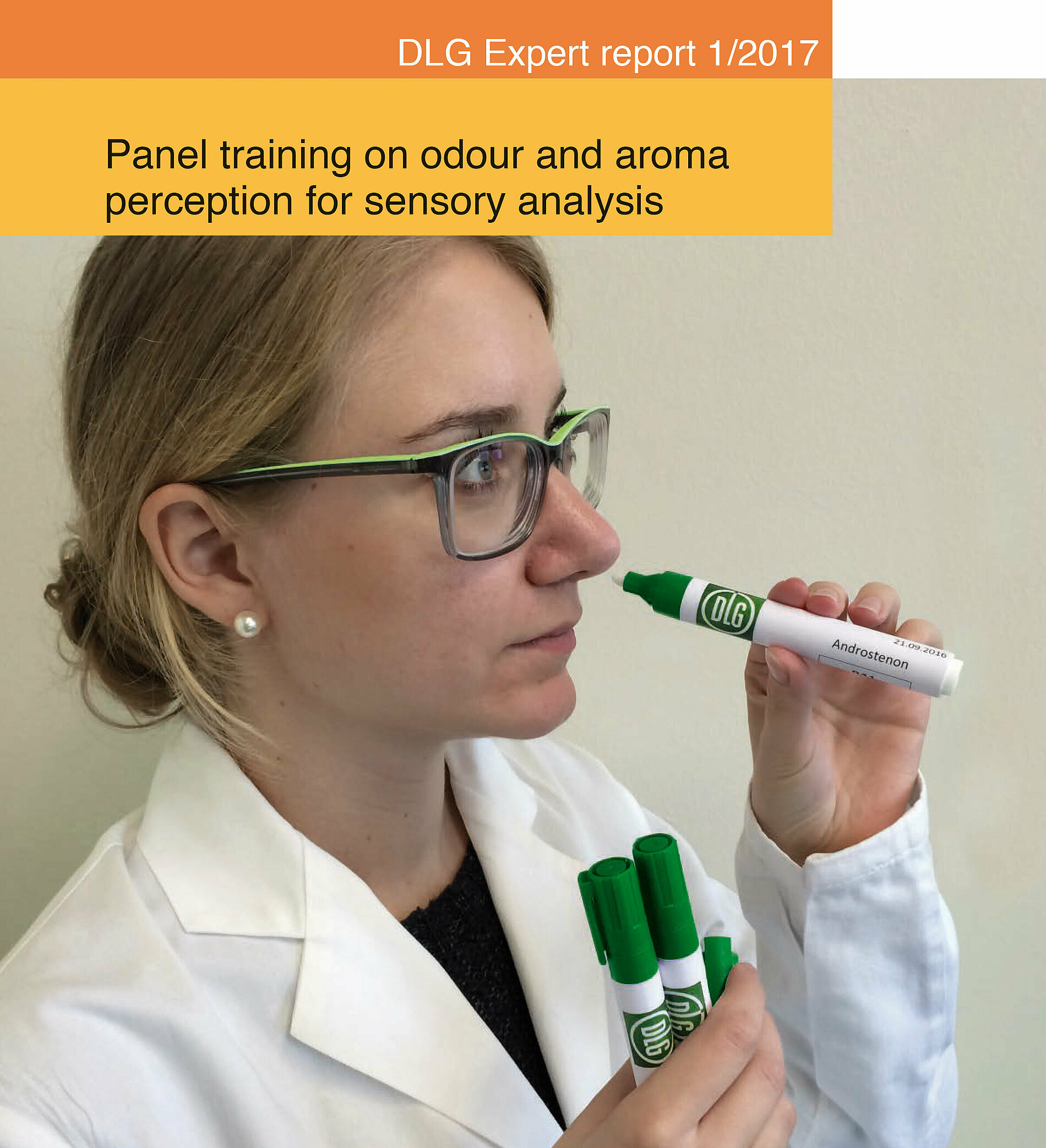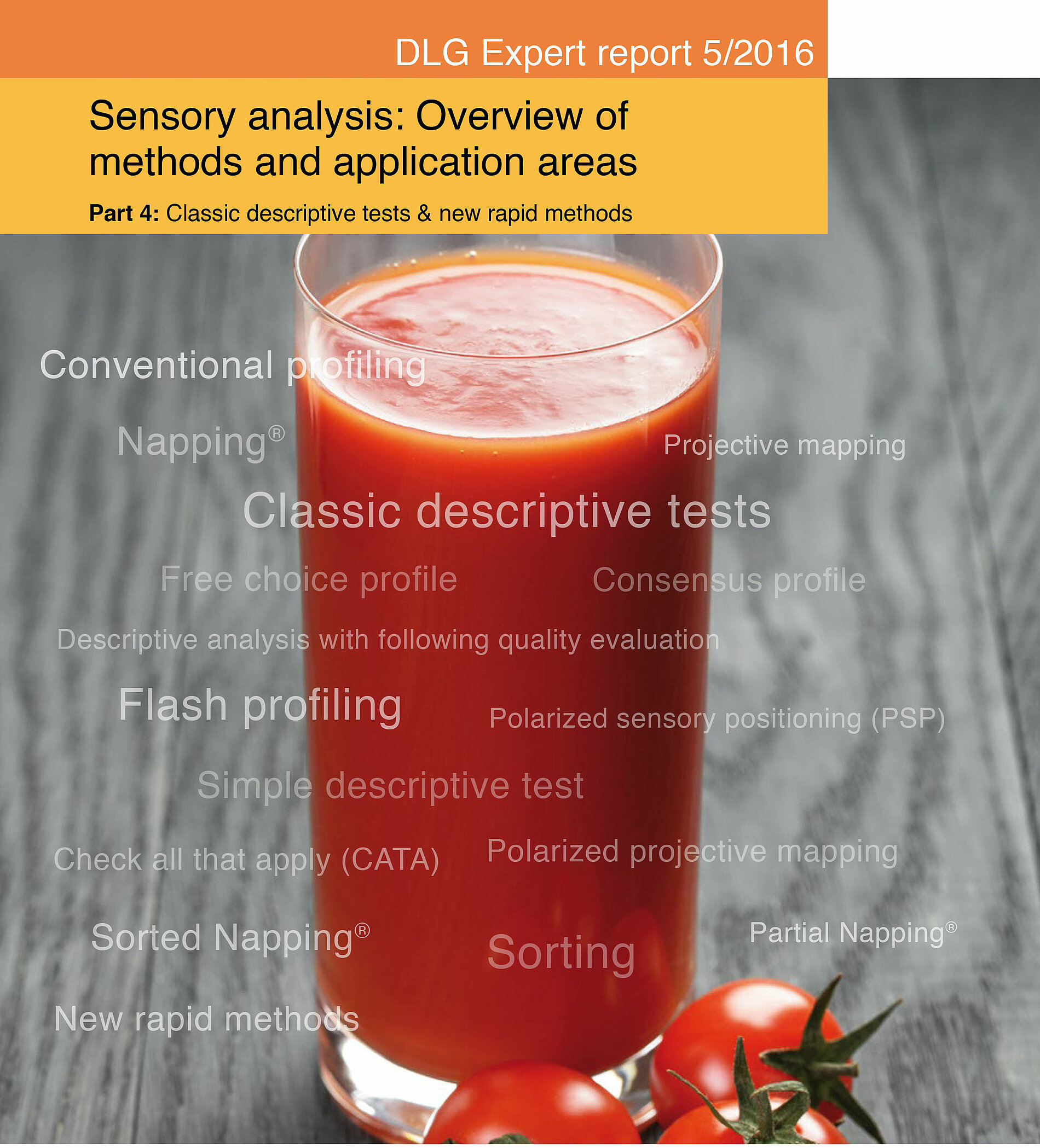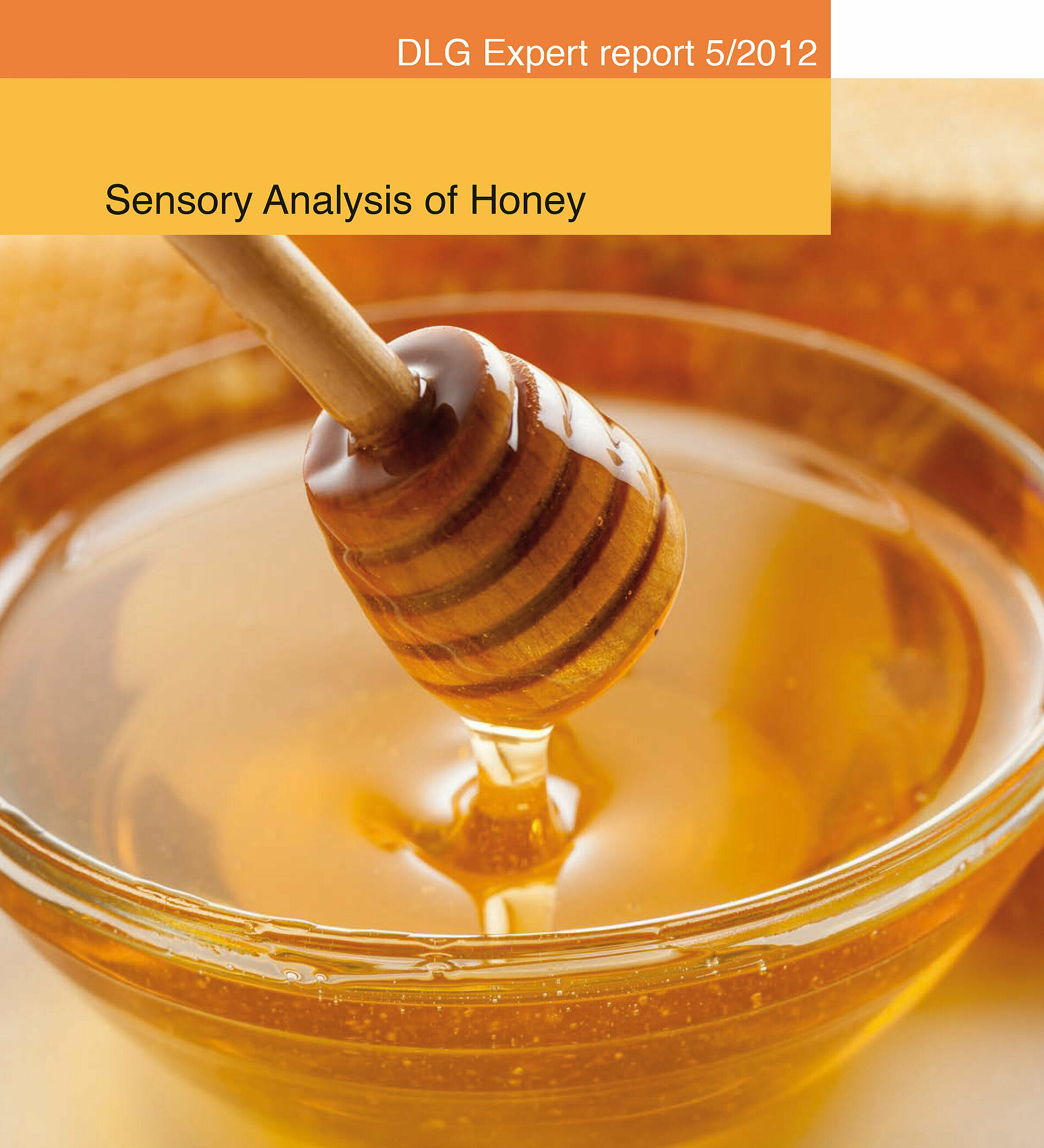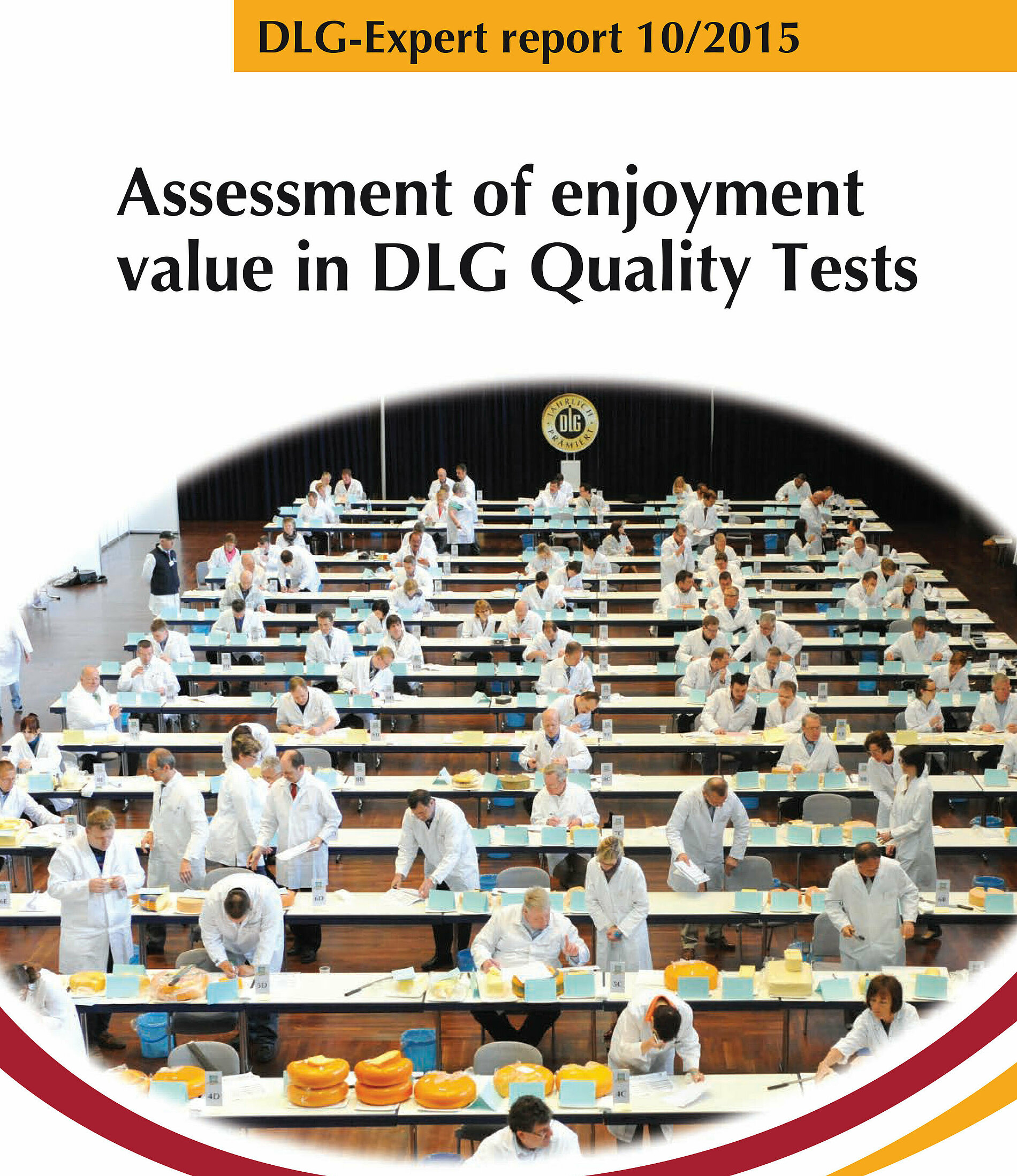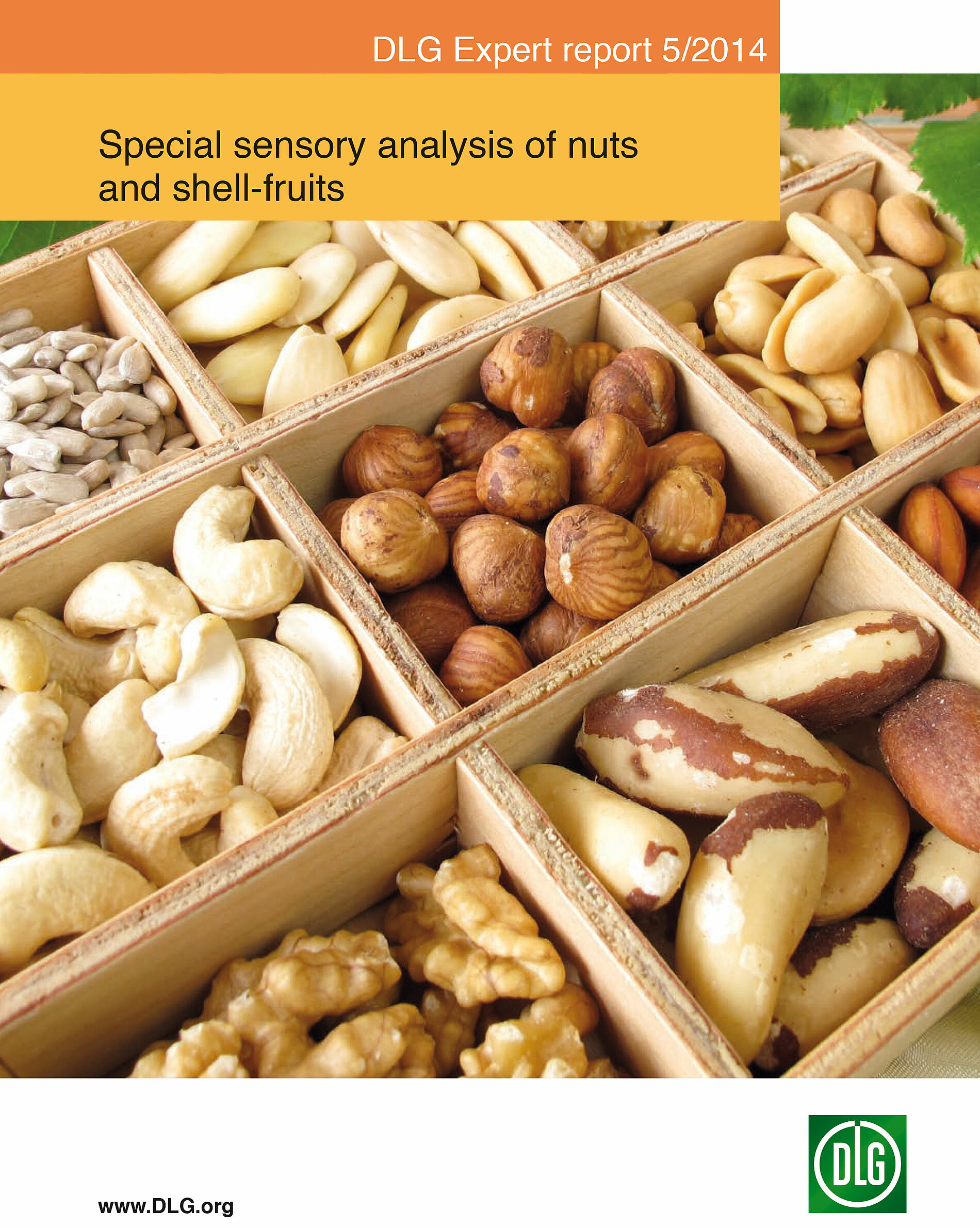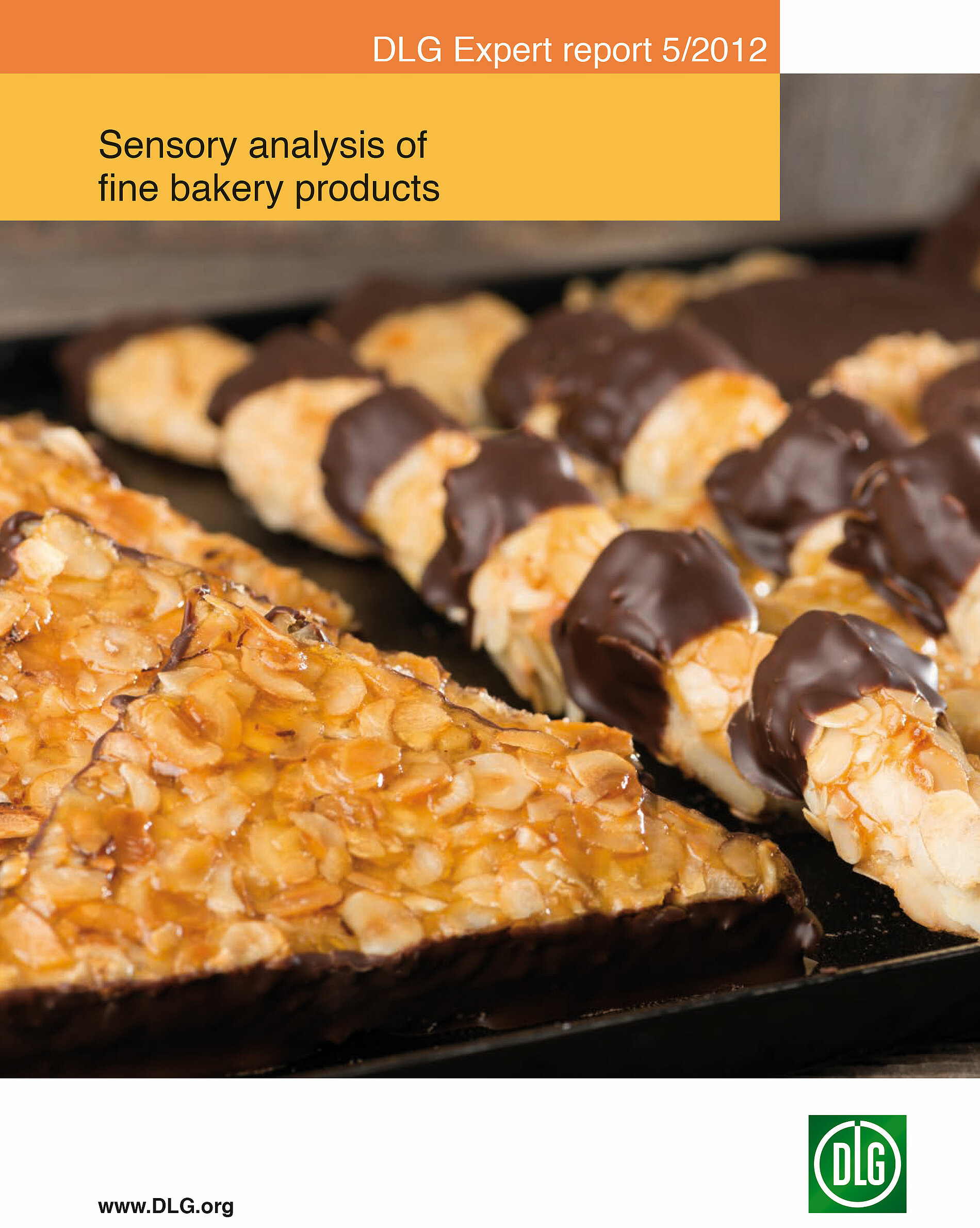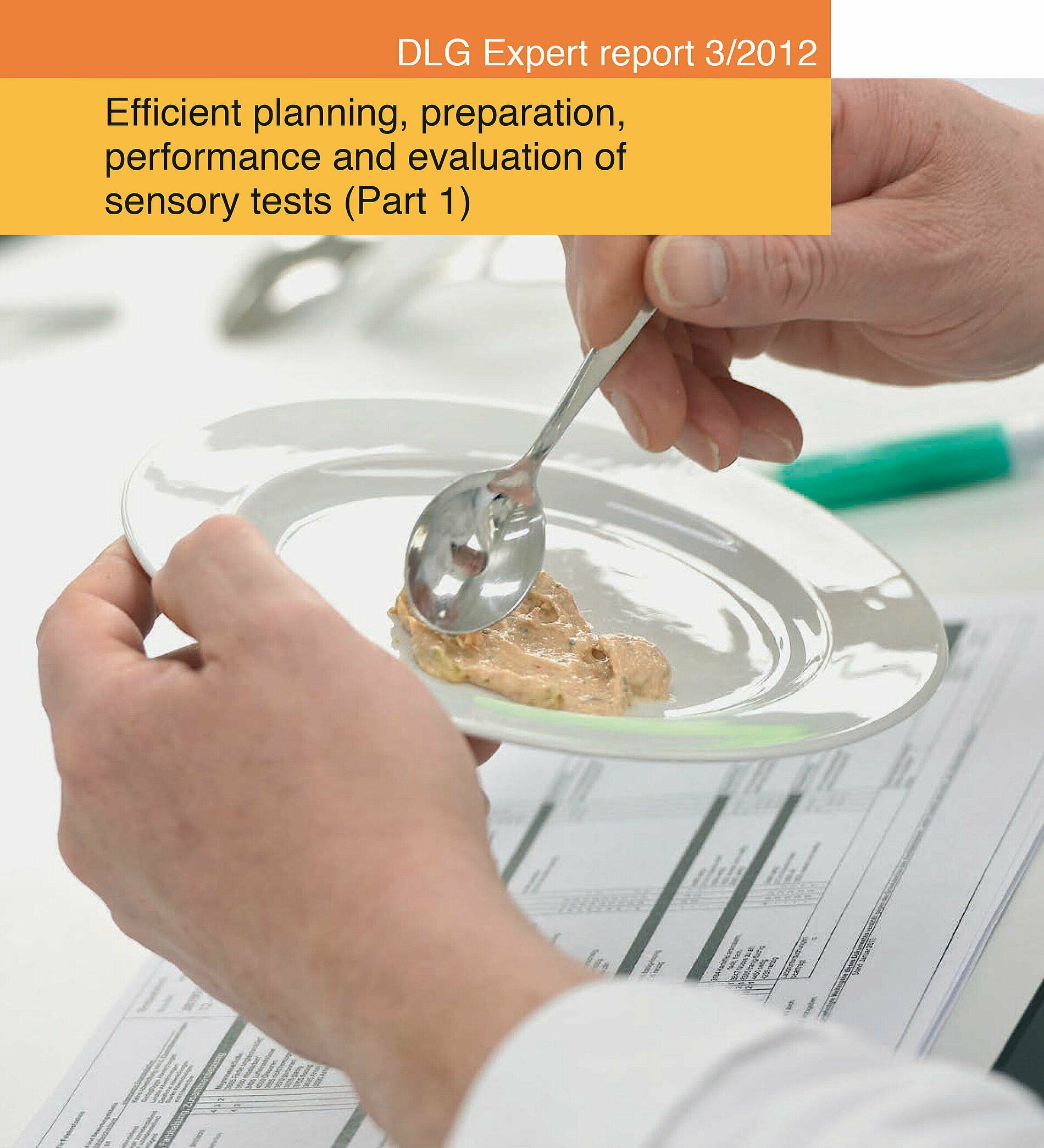DLG-Expert reports: Food sensory technology
DLG-Expert reports: Trends and strategies straight from the source. The DLG regularly provides information on the latest topics and developments in areas such as food technology, quality management, sensory technology, and food quality. In the series experts address current issues and provide comprehensive information and support.
Sensory evaluation: Contact-free, digital and online
DLG Expert report 4-2020
In special situations, e.g. the corona pandemic, the crisis and/or emergency plans of the respective companies become effective. In the following DLG-expert report initial ideas and experience have been compiled. They are primarily intended as an aid for experts and management staff in the sensory evaluation sector, e.g. especially panel leaders in quality assurance and product development, when resuming their projects in the area of analytical (and if necessary also hedonic) sensory work.
Practice guide for sensory panel training: Part 3
DLG Expert report 02-2020
Part 3 will now focus on measuring the performance of individual sensory assessors and entire sensory panels with different methodological approaches. The intention of the guide is to draw attention to the essential aspects to be observed when measuring the performance of sensory assessors and panels.
Sensory Evaluation 4.0
Significance and Perspectives of Digitalisation in Sensory Quality Control and Product Development in the Food Industry
DLG Expert report 15/2018
This DLG Expert report addresses the challenges of digitalisation in food sensory testing. In many companies, data collection, evaluation and administration of human sensory tests are already computerised. In this respect, various software programs are offered on the market that support the processes around sensory quality assurance and product development. However, further networking and automation of data management of these areas within the company, as well as with suppliers and customers is desirable. Consequently, for efficient sensory evaluation management in the digital environment, individual solution strategies with a high practical benefit must continually be developed.
Practice guide for sensory panel training: Part 2
Expert report 12/2018
Part 2 aims to introduce specific training plans including examples of reference materials both from DIN EN ISO 8586 and from practical application that can be used as suggestions for company-specific training plans. The tests conducted, and the substances, substance concentrations and foods that are used in this process, are
to be regarded as examples. They must be tailored or adapted to internal requirements depending on the respective training objectives, the sensory assessors’ qualification level or the food groups that are to undergo sensory analysis. Hedonic test methods are therefore only listed in some of the training plans in order to introduce the methodology and enable it to be used in consumer tests or for designing such tests. Tests such as these are never conducted with trained personnel!
Food Fraud: Possibilities and opportunities for risk minimisation in complex networked value-added chains
DLG Expert report 11-2018
A publication on the subject of “Food Fraud” is to be introduced with the words: “A spectre is haunting Europe – the spectre of food fraud”. The enormously increased, agitated media presence of the topic in recent years as well as the often rash and inconsistent synonymous use of the terms “food fraud”, “consumer deception” and “consumer deceit” in almost every food-related context by various organisations, institutions and in part also by companies in the food industry are leading to increasing uncertainty – not only among consumers, but also among participants in the meanwhile extremely complex value-added chain for food based on the division of labour.
The following expert knowledge is intended to create transparency in a compact form and provide strategies for practical risk prevention and defence.
Practice guide for sensory panel training: Part 1
DLG Expert report 07-2017
The withdrawal of DIN 10961:1996-08 ‘Training of assessors for sensory analysis’ and its replacement by DIN EN ISO 8586:2014-05 ‘Sensory analysis – General guidelines for the selection, training and monitoring of selected assessors and expert sensory assessors’ results in changed requirements for the selection of sensory panel members, their regular training and the monitoring of their assessment performances.
Food Pairing & Sensory Analysis – Boundless fascination?
Expert report 6/2017
The attention-grabbing combination “Caviar & white chocolate” by Heston Blumenthal will soon be two decades old. In the meantime top chefs and interested hobby cooks have experimented and applied the craft of food pairing, especially in the gastronomy sector. Food pairing is now experiencing new interest in a broader area. What chances does food pairing offer in conventional or innovative product development?..
Colours and their influences on sensory perception of products
Expert report 3/2017
Consumers have clear (although unconscious) expectations of the optical appearance of their food. The appearance of a product is generally the first feature that can be perceived by the senses. Alongside the colour, other appearance factors include the shape, surface condition, transparency or visible texture properties. However, it is the colour that stands out most, that triggers likes or dislikes, and that supplies the first information about the product quality (for instance the ripeness) or about product properties (such as degree of roasting)...
Panel training on odour and aroma perception for sensory analysis
Expert report 1/2017
The core of food flavour is formed not by the five basic taste types – sweet, sour, bitter, salty and umami – which are perceived on the tongue via the taste organ, but instead by the large number of substances and sensations that are perceived via the olfactory organ. These include both volatile odours and flavouring substances dissolved in the food (Legrum W., 2015, p. 26ff). In sensory analysis, the odour and aroma forms part of the spectrum to be analysed, alongside appearance, texture and basic taste...
Sensory analysis: Overview of methods and application areas
Part 4: Classic descriptive tests & new rapid methods
Expert report 05/2016
In addition to difference tests, analytical tests also include descriptive or descriptive sensory tests. Descriptive tests are intended to record and measure human perceptions and sensations when consuming food. Recently, there are numerous rapid methods or short-term procedures, whereby consumers directly describe the products presented and carry out hedonic evaluations in the same test. The following Expert report is intended to provide an overview of longstanding and new descriptive methods.
Sensory Claims – Methodological approach to development and substantiation
Expert report 15/2015
In today’s competitive environment and in the light of continuously rising consumer expectations, it is becoming increasingly more important for producers to describe their products fittingly in order to highlight their merits by comparison with competitors’ products and to boost sales. It is crucial for success to focus on certain particularly outstanding characteristic value-adding quality aspects of the food. Statutory regulations such as the Health Claims Regulation or the Food Information for Consumers Regulation are increasingly limiting companies’ scope for communication...
Sensory Analysis of Honey
Expert report 11/2015
Per capita consumption of honey is approx. 1 kg per year in Germany, 1.3 kg in Austria and 1.2 kg in Switzerland. 63% of Germans, more in the east than in the west, state that they eat honey regularly. However, the performance of honey bees extends well beyond the production of honey. Worldwide about 80% of all blossoms are pollinated by insects, and the honey bee accounts for 85% of these. Above all fruit-growing and beekeeping are closely linked...
Assessment of enjoyment value in DLG Quality Tests
DLG Expert report 10-2015
Since the first food test conducted in the year 1891, the DLG award system has achieved a high degree of recognition among consumers. This results in the obligation to face a critical public as regards both the theoretical basis and the practical implementation of DLG Quality Tests. The same questions are repeatedly raised in pertinent discussions, in particular regarding the sensory examination and assessment...
Special sensory analysis of nuts and shell-fruits
Expert report 05/2014
In 2012 Germans consumed on average 4.3 kg shell-fruit (including peanuts). In 2013 altogether 304,459 metric tons of nuts (including peanuts) were imported to Germany, the greatest shares of which comprised peanut kernels (92,669 metric tons) and shelled almonds (75,372 metric tons), followed by hazelnut kernels (61,321 metric tons) pistachios (22,762 metric tons) and cashew kernels (22,604 metric tons). The main processor is the confectionery industry. Nuts and shell-fruits are used above all in snacks, muesli mixtures, as baking ingredients, or for obtaining oils.
Sensory analysis of fine bakery products
Expert report 05/2012
Fine bakery products are not counted among the staple foods. The focus here is on the enjoyment value. Nowadays sweet foods belong in every diet, from young to old, that allows people to “take a break” and eat something sweet. As Paracelsus said so many years ago – “Poison is in everything, and no thing is without poison. The dosage makes it either a poison or not”. The goal of this worksheet is to show examples of using sensory methods to adapt formulations with regard to sustainability in the field of Fine Bakery Products. The DLG Expert Knowledge Series 1/2010 and 2/2010 on analytical methods and 4/2010 on hedonic methods provide a detailed insight into the sensory methods.
Efficient planning, preparation, performance and evaluation of sensory tests (Part 2)
Expert report 04/2012
Part 1 of the DLG Expert report on the subject of “Effi cient planning, preparation, performance and evaluation of sensory tests”, issue 3/2012, discussed defi nition of the target and various aspects to be taken into account in planning the test. Part 2 of this DLG Expert report continues with those elements of test design not yet examined and in addition focuses on performance and evaluation of the test...
Efficient planning, preparation, performance and evaluation of sensory tests (Part 1)
Expert report 03/2012
Sensory tests are non-measuring tests, also known as attribute tests. Unlike measuring tests (variable tests), they always supply qualitative findings to which figures are only allocated subsequently with the help of a test scale in the case of certain individual test methods (e.g. profile analyses, DLG Test). While chemical-physical measuring methods (e.g. measurements of pH value, spectrophotometric methods, mass spectrometry) are considered to be precise, sensory tests partly still suffer from an image problem...
Special sensory analysis of edible ices
Expert report 03/2011
Edible ice is a food in which the focus of consumption is on enjoyment. The product group Edible Ices is one of the still young product groups in our food programme. Iced, sweet milk and fruit preparations reportedly existed already in ancient times. However, it was only the invention of technical refrigeration by Carl von Linde in the year 1876 that created the condition for developing products that require production temperatures well below freezing point...
Contact
Guido Oppenhäuser • Tel.: +49 (0) 69/24 788-213 • G.Oppenhaeuser@DLG.org









